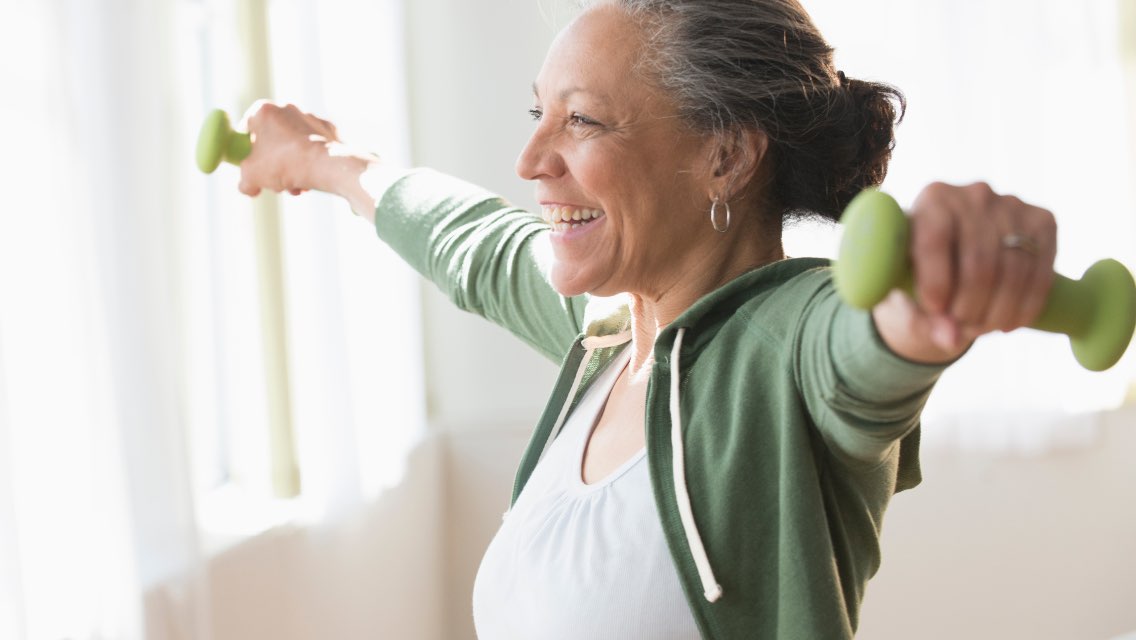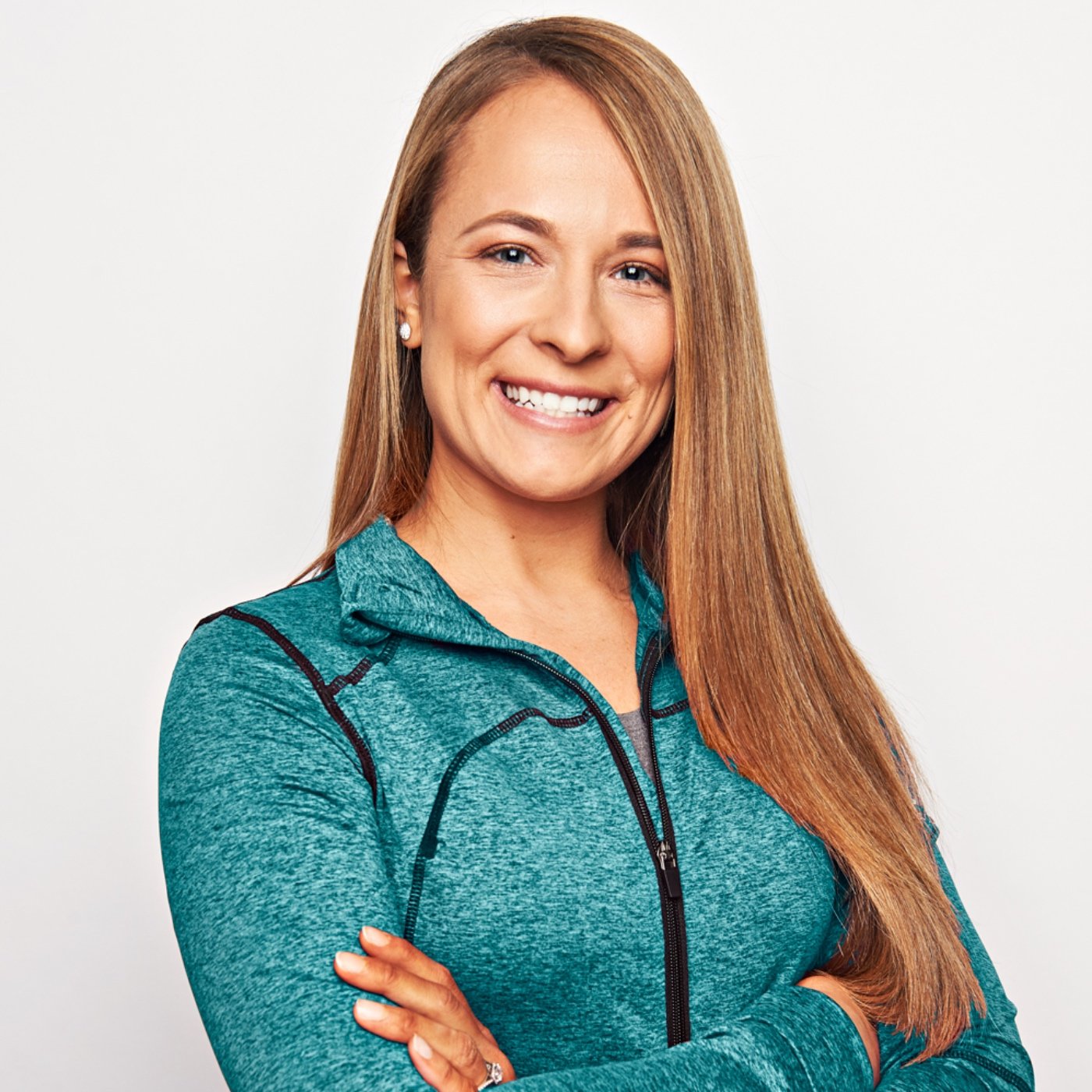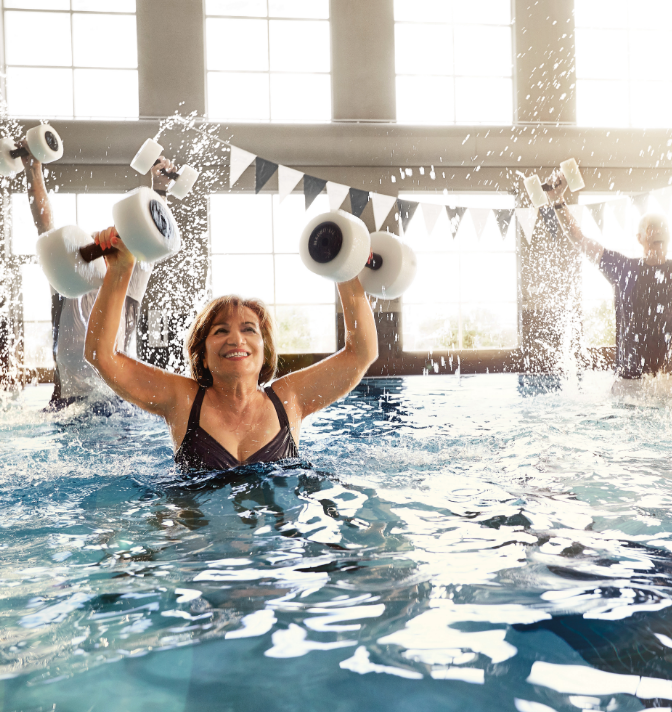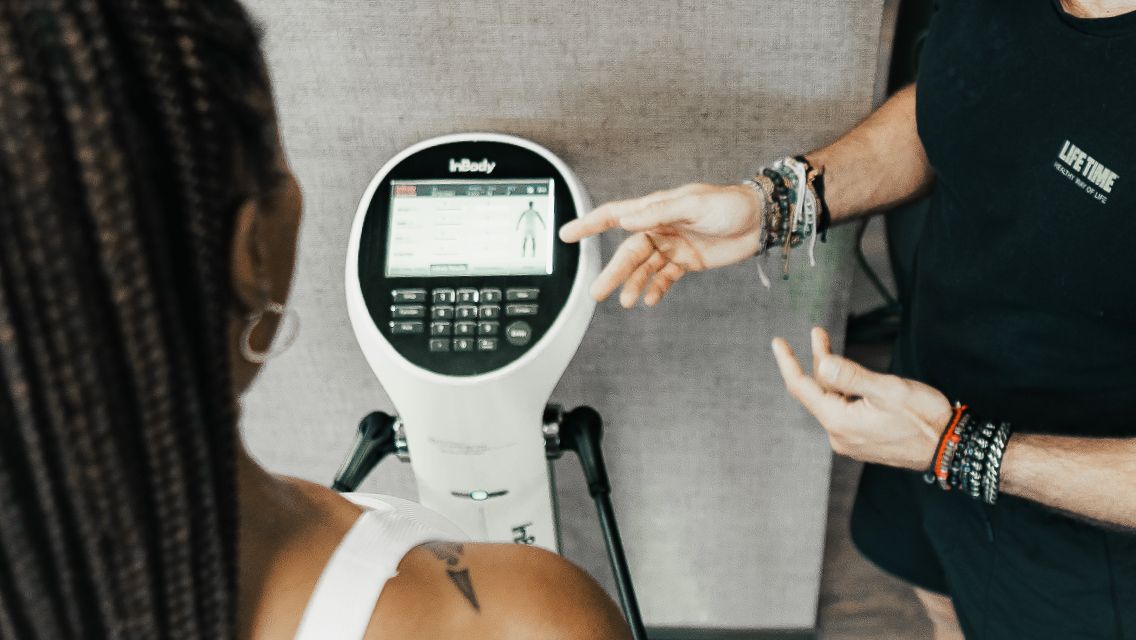Statistics show that for adults in the United States, the average weight gain per decade is an estimated 11 to 20 pounds.
It’s no surprise then, by the time the half-century milestone birthday rolls around, that many find themselves setting a goal to shed the extra 10, 20, or 30-plus pounds in an effort to feel more like their younger self again.
However, most who welcome in the middle-aged years report feeling stuck when their previous weight-loss tactics no longer produce the same results. While there’s no light switch that instantaneously changes or slows metabolism when we turn 50, there are some new considerations to take to help usher along better results.
Track Inches, Not Pounds
For most over the age of 50, it’s easy to associate a mental image of how you want to look and feel with a specific scale number that you remember weighing the last time you felt that way.
However, at this life stage, weight loss for the sake of weight loss might not be a good thing. As we age, we’re at a high risk of losing muscle. Quick weight loss could be a red flag that we’re wasting our ever-important lean tissue stores.
Muscle mass is not only important to achieve the shape, firmness, and tone many are seeking, but it’s crucial for longevity and quality of life. The more muscle you maintain or gain, the more likely you are to stay active, youthful, and independent into the later years.
Muscle is relatively dense compared to fat, and if you’re losing unwanted body fat while prioritizing muscle, it’s more probable that you’ll lose inches rather than pounds.
Ask yourself this question:
I fit into the clothes I want to wear, am able to do the activities I enjoy, and look the way I want to — does it matter what the scale says?
Eat More Protein
Our ability to digest and absorb protein decreases as we get older and our levels of digestive enzymes decline, yet the importance of protein for metabolism gets even more important.
For many, it can be surprising to see what a well-structured plate looks like. My most successful clients, when initially presented with how much protein is ideal for them, often looked me dead in the eye and said, “You want me to eat how much?”
Most generally healthy people fare well with daily aiming for a target of one gram of protein per pound of goal body weight. If you’re not into using a food tracker to calculate grams, it might be easier to focus on consistently including protein at every meal and in the right amounts.
For most, that means one to two palm-sized servings three times per day, plus a high-protein snack, such as cottage cheese, plain Greek yogurt, or a “shake and go” All-in-One protein shake. A few great options to consume at meals could include wild-caught fish, pastured poultry and eggs, grass-fed beef, or plain, unsweetened dairy (if tolerated).
For reference, here’s what 30 grams of protein looks like.
This higher protein intake approach can have a significant impact on appetite regulation, reduction of cravings, and stabilization of energy levels. Plus, amino acids, the building blocks of protein, are necessary raw materials needed for your body to build and maintain the precious muscle I discussed above.
Lift Weights
As we get older, certain changes in reproductive hormones are inevitable.
Menopause and andropause (the marked decline in hormones such as testosterone often referred to as “male menopause”) are significant metabolic shifts that happen under the surface, and are ones that are intimately involved in fat storage, energy, and muscle mass maintenance — which is why some of these changes are also implicated in the age-related associations to fat gain and muscle loss. In menopause, the adrenal glands (which direct our stress response) take over much of what’s left of hormone production. As a result, it becomes even more important to consider the total stress and demand of your workout regime, along with your ability to rest and recover.
To help combat some of these inevitable changes, an exercise approach to drive the best results at this life stage must include a progressive, well-designed strength-training program to add continuous challenge to the muscles in a way that isn’t too stressful.
In fact, prioritizing weight lifting over other forms of exercise is often what’s needed, as chronic, intense cardio and some endurance sport training can be more likely than strength work to cause issues with cortisol (your stress hormone). Cortisol, when out of whack, is catabolic, meaning it causes the breakdown of lean tissue. It can also contribute to belly fat gain.
What can be helpful after age 50 is a plan that prioritizes lots of daily movement and steps (to avoid being sedentary), strength training three to four times per week, recovery and mobility work, and cardio that is designed to avoid overtraining and allow for proper rest between sessions.
Stop Dieting, Start Nourishing
It can be tempting to cut calories in an effort to lose weight, yet as we get older, it’s common to find this strategy to be less and less effective.
Some of the hormone changes noted above can be sensitive to (and exacerbated by) dramatic calorie cuts. Dropping too low in caloric intake can further lower testosterone and estrogen levels, both of which are needed to feel, function, and look our best. Plus, it can trigger higher levels of stress hormones too, even more so putting lean tissue and muscle at risk.
We’ve all seen, at one point or another, a 50-plus aged friend or family member who lost weight yet somehow looked less healthy and almost gaunt and sunken in. One of the best ways to prevent that is to make sure you nourish well instead of “diet.”
You can often shed unwanted body fat more gently and thrive by in your nutrition approach including:
- Plenty of colorful vegetables that fill half of every plate for fiber and antioxidants
- One to two solid palm-sized servings of high-quality protein, such as wild-caught fish, pastured poultry, organic eggs, and grass-fed beef
- Some healthy fat to enhance taste, texture, and nutrient intake — think options such as avocado, olive oil, nuts, and seeds
- A small cupped handful of complex carbohydrates, such as root vegetables, beans, lentils, or fruit to help replenish energy around workouts
The goal is to fuel your body well — not deprive it.
Final Thoughts
Part of the perception that losing weight after 50 is difficult stems from a misguided focus on dropping pounds — when often what is actually desired is a change in body composition.
Muscle tissue is required for a trim look. And with the risk of losing it increasing as we get older, the surprising truth is that a focus on muscle building will often yield the results that someone with a weight-loss goal is actually looking for.
To boot, we all will reach an age in which we no longer can put on muscle, so doing everything we can to build up our stores ahead of time is paramount. And the last thing we want to do is inadvertently lose muscle through our weight-loss attempts in our middle-aged years.
The concepts above can set you up for a more rewarding approach to fitness and wellness, both after age 50 and into the golden years. There’s much to gain (instead of lose) to get the results you desire.





